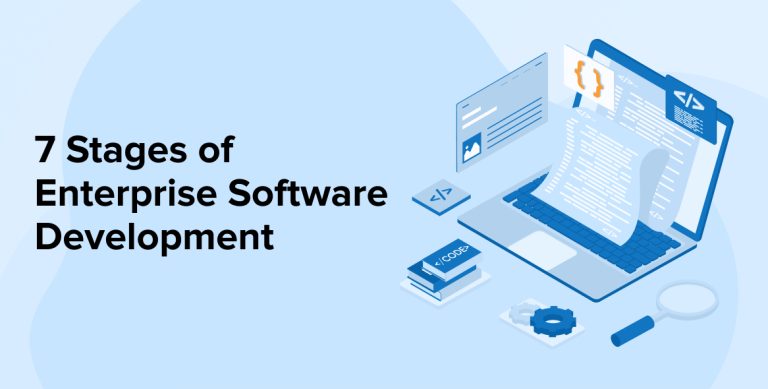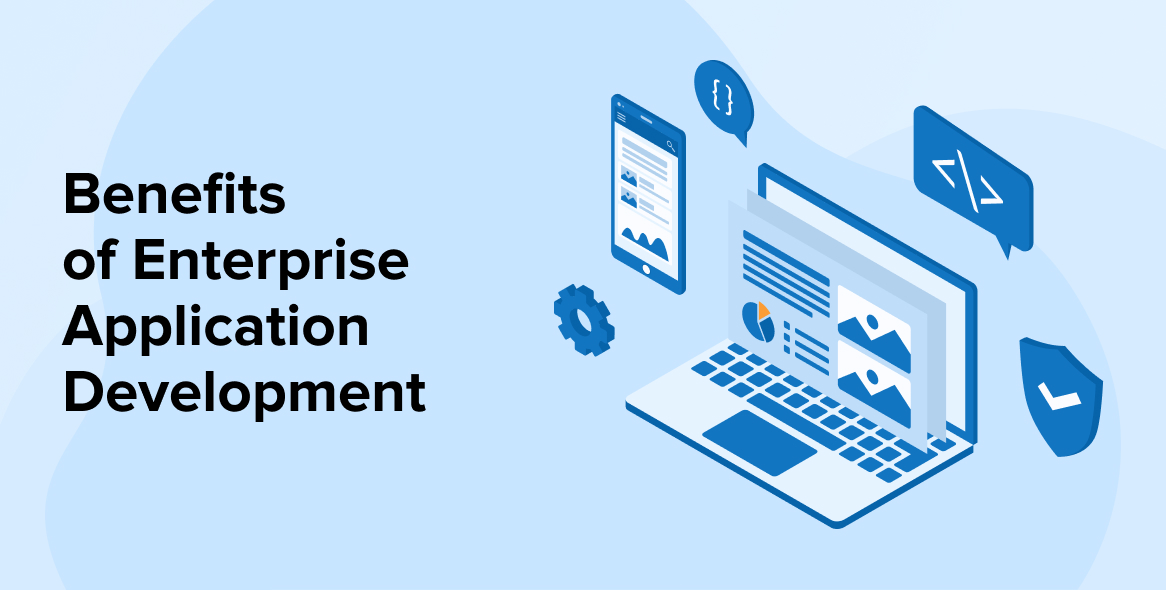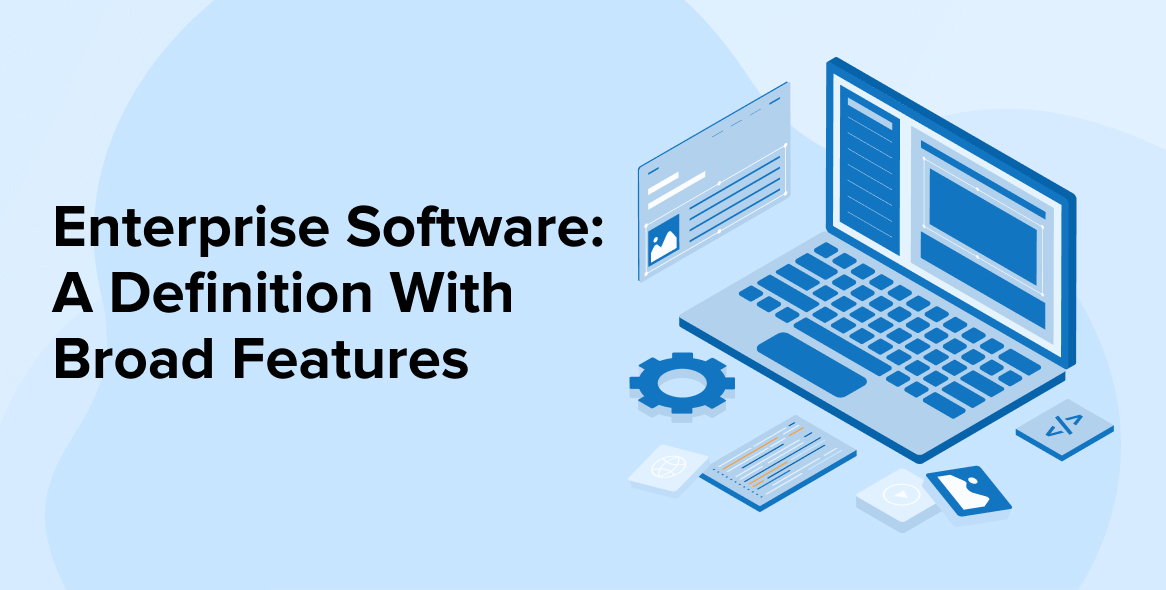
The advent of software technology has underpinned effects on the foundations of many businesses. Nowadays, every enterprise is moreover dependent on technology to make their process improved and faster. For that, the business may need to develop software that caters to their individual business need. But is it a feasible option to build multiple apps for each individual business need? The answer is No, there comes enterprise software development in the picture. The enterprise application development process is not a fixed method, it keeps varying as per the need of technology. Your development process has the ability to change the face of the developing application.
If you think that there is a fixed methodology that will boost your development process and upscale your app’s performance. Then, you are under a myth. Most businesses are trapped under the thought of following each other’s steps will help them achieve desired results. However, there is a systematic approach to boost software app performance and enhance the way of working. Software development Lifecycle has a predefined methodology that can be perfectly fitted to any business size.
Software development Lifecycle aka SDLC enables developers to address product development in a structured manner while simultaneously ensuring that it is delivered on schedule and under budget. SDLC for enterprise application is a development monitoring system that is divided into seven stages that must be completed in a specific order. It makes it easy for planners to schedule the software project and have near-accurate time and expense estimates by following it. With the leading enterprise software development company TatvaSoft, this process becomes easier to execute.
All the businesses have now defined a specific process of enterprise application development methodology. This incremental step-by-step approach helps companies to easily develop software apps and predict the accurate times for completion of the project. This blog is nothing from the usual, but this can be an eye-opener for many businesses who want to have visibility and transparency in their business process.
Let us start with the 7 vital stages of enterprise software development.
1. Defining the Scope of Enterprise Software Development Process
We see three major processes involved before the development phase for a software application development phenomenon. Similarly, we have three phases involved in the post-development process of any software. In the pre phases, the first one is defining. This stage can also be renamed by other names like planning, plotting, blueprint, requirement gathering stage. or anything similar in enterprise software development.
Ultimately, in the stage of software development what we do is define the scope of the project. Along with scope, we devise a plan, involve all the stakeholders, discuss the plan and wait for the green flag from all team members. This involves all the major stakeholders since it involves all the operations and functions that need to be integrated with the software.
Now based on other considerations and specifications set out in this phase, the schedule and the budget is been decided. The decision regarding the necessary resources is made, if we need to purchase technology or tools. Also, decisions regarding the talent required for this software project are recruited, among other things.
By the end of the stage, there would be no concealed information in this process, businesses will reduce the risk associated with their software growth. And after this, we will start off with the analysis of the requirements.
2. Analysis Requirements in Enterprise Applications
Succeeding the requirement gathering phase, we will now analyze the requirements and find if there are any loopholes in the enterprise software development process. If there are loopholes in this process they will be resolved during this phase itself and hence it will not interrupt the process of development or any of it in further stages.
In the second stage of enterprise software development, the deliverable of the above stage is considered as we mentioned above. An SRS- Software requirement specification document is prepared which is a guide to what should be done and how to address all the minor details specifically of enterprise software. This stage checks on the feasibility of the application and accordingly the plan progresses ahead. The SRS document created takes care of all the information in the account and after validation passes it to the development phase.
With this document, there will be no barriers to the development process, everything is clearly defined and every minute detail is focused on and addressed. The software tools, technologies, and programming languages needed will be clear in this phase.
After the feasibility of understanding and integrating the requirements of custom enterprise software, the next stage is to implement the plans into designs.
3. Designing Phase of Enterprise Software Development
This phase of enterprise software development where all the prerequisites are taken into consideration. From the smallest modules to the overall architecture of the program, all the minute details of a project are described and designed. The SRS script is the primary thing here., which was created in the previous process, and is now being used to develop the app. Different components are created and registered, and software management is done in accordance with the project’s scope and services.
The framework and program architecture are prepared in this process based on the requirements criteria that were studied in the previous phase. Device design aids in determining overall system architecture as well as identifying hardware and function specifications. The device architecture requirements are used as guidance for the model’s next step. The data from this step will be taken into the next stage.
4. Development Phase of Enterprise Application Development
Now, that the design is ready this is the most awaited stage of software development, where the actual implementation takes place. This is the project’s most time-consuming and challenging process. Coding is the process in which the previous step’s deliverables are used, and developers begin to build them, coding them in the language chosen in the first step. There are many challenges, we come across when developed by in-house employees.
There are sprints decided in the planning phase that need to adhere to in this development phase. We need to abide by the schedule and deliver the planned deliveries. Enterprise application development company keeps an eye on the upcoming trends in enterprise application development. There are a set of developers assigned for the delivery task and a Project manager manages the enterprise application development phase.
If all of the modules have been designed, they are assembled, and if everything goes according to plan and there are no dependency failures or conflicts, you will have a completely functional program that is ready for the next phase in the custom software development.
5. Testing Phase of Enterprise Application Development
Another set of important stages came into the picture just after the enterprise app development process is completed. After this post-development process, there are enhancement stages where the developed product is examined, tested, and deployed.
There are various types of testing processes that can be performed in order to conduct tests of the applications. The types of software development testing include the following testing methods.
5.1 Unit Testing
It defines modules one by one to ensure that each program unit functions properly.
5.2 QA Testing
Checking for quality assurance reduces the number of failures and accidents. As a result, you’ll have a clean code that’s easy to modify as required.
5.3 Integration Testing
This form of testing is used to detect any defects in how merged units communicate. To ensure a smooth result, all of the individual units are put through their paces.
5.4 UI Testing
This evaluates the developed app’s user interface which includes how it looks and feels. This refers to how this will appear to consumers and how they will communicate with programs.
5.5 Performance Testing
The aim of this test is to find and eliminate performance bottlenecks in custom applications. Developers measure speed, reaction time, reliability, resource utilization, and scalability using the expected workload.
5.6 Software Testing
Developers perform security monitoring to detect any potentially risky attacks, glitches, or threats. It detects security bugs that developers can fix when working together.
6. Deployment Phase of Enterprise Software
Ideally, the last stage of enterprise application development is- the Deployment Phase of Enterprise Software. For an organization, enterprise application software are game-changers. They develop custom software development applications for native as well as modern applications. As a method of modern technology, these enterprise applications have cloud-enabled services and storage to enhance enterprise mobility and eliminate accessibility challenges. The deployment stage takes care of all the data, web, and mobile apps of the company.
Finally, the enterprise application platform is about to get launched. Obtaining all the manual permission to install the device is the first step in the implementation process. In this deployment process, all the software apps are tested to the core and after validating the software, it is all set to release the software.
The management of the deployment can be made automated by using ARA- Application Release Automation is one of the techniques that some businesses use to install applications. Employees must be taught how to use the app until the custom enterprise software is made available to them. The seamless release of your company’s software is the result of this point.
7. Maintenance and Upgrading Custom Software Product Development
After the deployment of the enterprise application is completed, doesn’t mean you are free from the app management. Once the software application is deployed, it’s time to keep it running and update it to meet the business goals of the clients or stakeholders. This move includes new program changes, UI changes, and everything else that happens during the release phase.
To upkeep processes and the device secure from outside attacks and to continuously update software apps for storage or cloud up-gradation, web and data management, regular software updates, and security patches. The company needs to do everything to keep its custom enterprise application development updated.
8. Is Your Business Ready to Develop Enterprise Apps?
Finally, we have come to understand from the blog that no one size fits all. This means that not every company has the same method of developing custom enterprise applications. Employees are working efficiently towards custom software applications. We have seen in this blog, we have seen the step-wise step process of software app development for any enterprise. Though there are challenges during the whole process if the organization chooses to do it on its own. Thus, it is always advisable for every company and their employees must follow these steps to develop apps for their enterprise.
Although now that we know that there is no set method for developing enterprise applications, and different developers may take different methods, the steps mentioned above will appear in most of these processes in some way or another. As a result, you must be aware of them. Software Development life cycle has a comprehensive strategy for developing apps, forces you to log your plan in minute detail and efficiently to plan to build, code, and test enterprise applications.




Thanks for the informative article. All the reasons explained here seem to be quite precise. Keep sharing such articles.
Most ideal choice depends upon our requirements, but making the wrong selection can be both costly and time consuming.When making the selection, Our prime concern should be the efficiency with which software serves our company and other partners in the best possible way.Custom software offers some advantages which can be beneficial for longer terms. Custom software can serve startups better than shelf software.